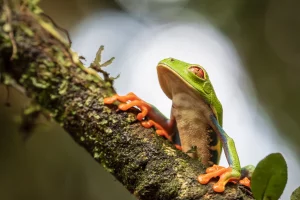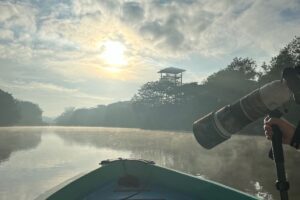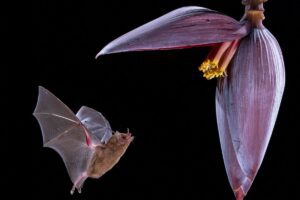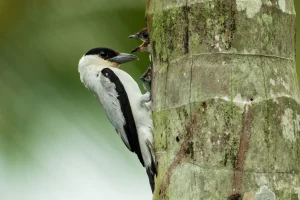Explore San Gerardo de Dota and the Zona de los Santos
Nestled in the Talamanca mountains of southern Costa Rica, San Gerardo de Dota is a quiet valley surrounded by cloud forest, waterfalls, and abundant birdlife. Known worldwide as one of the best places to photograph the resplendent quetzal, the area also offers unique opportunities to capture highland hummingbirds, mixed flocks, and mystical landscapes. With San Gerardo de Dota photography tours in Costa Rica, Physis Photo Tours connects you with the best guides, lodges, and field strategies to maximize your photography experience.
Biodiversity and Highlights
The high-elevation cloud forests (2,200–3,000 meters / 7,200–9,800 ft) of San Gerardo and the wider Zona de los Santos harbor species rarely found in lowland destinations like Boca Tapada or Maquenque. Here’s what makes this region unique:
- Resplendent Quetzal: Iconic and brilliantly colored, especially active during the breeding season (Feb–May).
- Highland hummingbirds: Fiery-throated, Volcano, and Magnificent Hummingbirds at feeders and forest edges.
- Mixed flocks: Collared Redstart, Long-tailed Silky-Flycatcher, Flame-throated Warbler, and others.
- Endemics: Spotted Wood-Quail, Ruddy Treerunner, and Costa Rican Pygmy-Owl.
- Landscapes: Misty ridges, moss-covered oaks, and cascading rivers offer excellent opportunities for wide-angle creativity.
Weather and Best Time to Visit
Temperatures in San Gerardo de Dota average 10–20°C (50–68°F). Mornings are crisp, afternoons can bring fog or showers, and evenings are chilly. The dry season (December–April) offers clear mornings, while the green season (May–November) delivers dramatic mist and mood, perfect for atmospheric compositions. Quetzal breeding peaks between February and May, when males display their full plumage.
Photography Opportunities
Our San Gerardo de Dota photography tours in Costa Rica are designed around these highlights:
- Resplendent Quetzal Photography Tour: Early morning sessions near feeding trees and nesting sites.
- Hummingbirds: Multi-flash or natural light sessions at lodge feeders and forest edges.
- Mixed flocks: Guided walks to track fast-moving groups of colorful highland species.
- Landscapes: Long exposures of waterfalls, rivers, and fog drifting over ridges.
- Macro: Orchids, bromeliads, and cloud-forest insects in intimate detail.
Recommended Gear
- Telephoto: 400–600mm for quetzals and highland birds.
- Macro lens: 90–105mm for flowers and insects.
- Wide-angle: 16–35mm for landscapes and waterfalls.
- Tripod: Essential for long exposures in low light.
- Warm clothing: Jackets and layers for chilly mornings and evenings.
Stay and Experience
San Gerardo de Dota offers small family-owned lodges and eco-hotels with direct access to birding trails and rivers. Early mornings focus on quetzals, mid-day on hummingbirds and mixed flocks, and afternoons on landscapes. With Physis Photo Tours, Andy Bezara ensures every session is planned for light, species behavior, and your personal goals.
Plan Your San Gerardo de Dota Photo Tour
Ready to photograph quetzals and cloud forests? Compose your custom photography tour and combine San Gerardo with Caño Negro, Boca Tapada, or Monteverde for a full Costa Rica experience. Explore more in our Photography Destinations hub.
Internal and External Resources
Learn about cloud forest ecology at the International Cloud Forest Network. For related tours, explore Monteverde and Cachi & Orosi.
Related Posts
Frequently Asked Questions
1. When is the best time to photograph the resplendent quetzal?
From February to May, during breeding season, when males display their full plumage.
2. What makes San Gerardo different from other destinations?
Its highland cloud forests host unique species like quetzals, fiery-throated hummingbirds, and mixed flocks not found in the lowlands.
3. Is it cold in San Gerardo de Dota?
Yes. Temperatures can drop below 10°C (50°F) at night. Warm clothing is essential.
4. Can San Gerardo be combined with other destinations?
Absolutely. Many tours include San Gerardo with Monteverde, Boca Tapada, or Caño Negro for a diverse portfolio.





